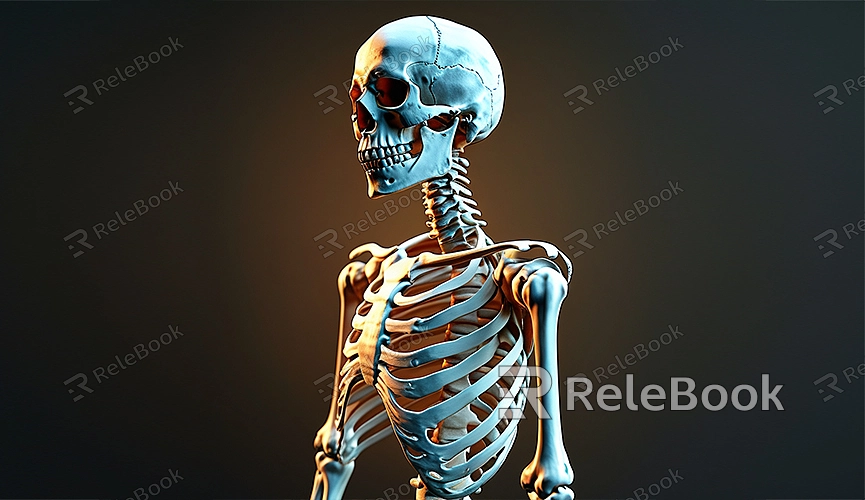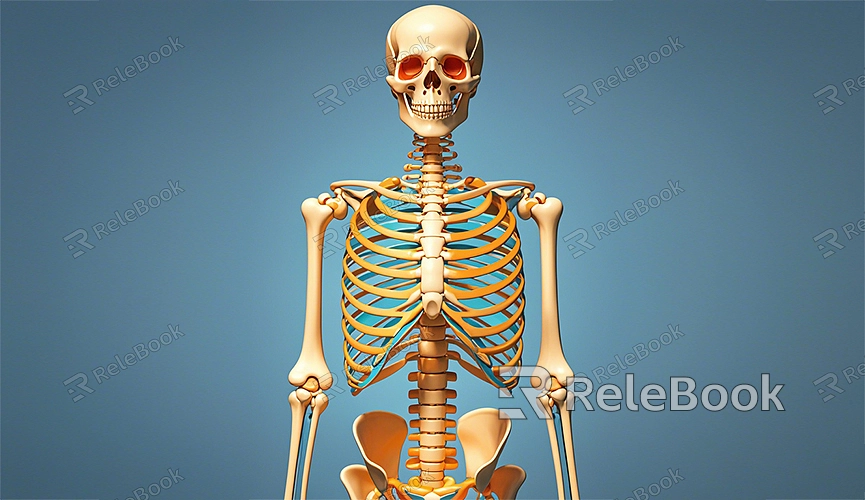How to Make a 3D Model of the Skeletal System
3D modeling of the human skeletal system has a wide range of applications in fields like medicine, education, and game development. Whether it’s for medical teaching or for animating character rigs, creating a realistic skeletal system model requires specialized skills and tools. This guide will provide a detailed explanation on how to create an accurate 3D model of the skeletal system using 3D modeling software such as Blender, and share some tips and resources to help you complete the project successfully.

Choose the Right 3D Modeling Tool
Selecting the appropriate 3D modeling software is crucial before you start creating a skeletal system model. Blender, an open-source and powerful software, is a popular choice among many 3D modelers. It offers robust sculpting and modeling tools, allowing you to create complex geometries and details. With Blender, you can accurately build each part of the human skeleton, from the skull and limbs to the spine and other intricate skeletal structures.
In Blender, you can start with basic geometries like cylinders and spheres and gradually sculpt the skeletal structure. For example, the vertebrae can be created by modifying the shape of a cylinder, while the bones at the joints can be started with spheres and detailed progressively.
Study Skeletal Anatomy
Understanding human anatomy is essential before modeling the skeletal system. Use anatomy books or online resources to study the shape, location, and proportions of each bone. The human skeleton consists of 206 bones, including the skull, spine, ribs, limbs, and joints. During the modeling process, ensure that each part’s proportions and details adhere to anatomical standards to make your model look more realistic.
Blender’s sculpting tools can help you further refine the shape and details of each bone. Sculpting tools allow you to simulate the bone surface's textures, grooves, and natural forms. For instance, pay close attention to the details of the eye sockets, nasal cavity, and jawbone in the skull.
Enhance Model Details with Textures and Materials

After shaping the basic skeleton, adding textures and materials will enhance realism. The surface of bones often has subtle textures, showing cracks, holes, and wear. Blender’s node editor allows you to create complex materials for the bone surfaces, simulating different textures by adjusting roughness, metallic properties, and bumpiness.
High-quality 3D textures are crucial for the final effect of the skeletal model. If you need many high-quality 3D textures and HDRIs for your models and virtual scenes, you can download them for free from [Relebook](https://textures.relebook.com/). The texture resources provided by Relebook can help you add more realistic details to your skeletal model, enhancing its overall visual appeal.
Adjust Lighting and Rendering Settings
Lighting and rendering are key components in presenting 3D models. Proper lighting settings can highlight the details and forms of the skeletal system. Use HDRI environment lighting in Blender to simulate real-world lighting effects, adding soft shadows and highlights to the bone model. Volumetric lighting and directional lights are also effective methods for enhancing rendering effects, making the skeletal system appear more three-dimensional and vivid.
If you need high-quality 3D models or are looking for more resources to enrich your scene, you can download them from [Relebook](https://3dmodels.relebook.com/). Relebook offers a wide range of premium 3D resources, helping you quickly create outstanding work.
Creating a realistic 3D model of the human skeletal system requires patience and skill. By choosing the right tools, thoroughly understanding human anatomy, meticulously sculpting bone shapes, applying high-quality textures, and adjusting lighting and rendering settings, you can successfully create a detailed and accurate skeletal model. For high-quality 3D textures and HDRIs, download them for free from [Relebook](https://textures.relebook.com/). Relebook not only provides rich resources but also adds more possibilities to your 3D modeling projects.

